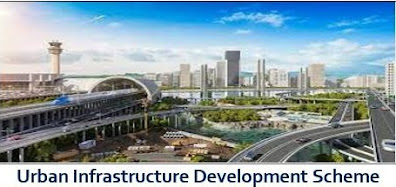These missions have been instrumental in addressing basic urban necessities of affordable housing, sanitation, solid and liquid waste, infrastructure, urban renewal and retrofitting, as well as frontier themes of digital governance, technological innovations, smart solutions for economic growth and improving quality of life of people to achieve the targets of SDG 11.
(i) Social Inclusion and Ending Poverty:
Slums pervade almost all urban areas with 2,613 towns, or 64% of all towns (4,041) in the country reporting slums in 2011. Central and State governments have continued to actively design and implement complementary programmes and missions to provide better housing and infrastructure targeted in slums and informal settlements. Specifically, In-Situ Slum Upgrading is one of the four strategic interventions under the Housing for All Mission, through which 451,050 houses have been sanctioned as of November 2021.
(ii) Access to Adequate Housing:
The government’s flagship, Housing for All mission has imbibed the principles under the Universal Declaration of Human Rights. Under the mission all eligible beneficiaries were provided assistance to either build or acquire an all-weather dwelling unit with basic civic and social amenities. Light House Projects (LHPs) are also being built as part of the Global Housing Technology Challenge-India (GHTC- India) initiative under the Pradhan Mantri Awas Yojana- Urban (PMAY-U). MoHUA is promoting LHPs as live laboratories for transfer of technology to the field. The primary goal is to encourage large scale participation of people to create technical awareness for on-site learning. Under PMAY Urban, a total investment of 108.361 billion USD has been made as of April 25, 2022, and that has resulted in 12.269 million houses being sanctioned, and 5.8 million houses completed/delivered to beneficiaries.
(iii) The Atal Mission for Rejuvenation and Urban Transformation (AMRUT):
It was launched in 2015 by MoHUA to provide basic civic amenities, namely, water supply, sewerage and septage management, storm water drainage to reduce flooding, non-motorized urban transport and green space/parks in 500 cities to improve the quality of life with major focus to the poor and the disadvantaged. The mission facilitated investments of 3.522 million USD in over 4,000 projects across 500 cities. A key feature of the project was green investments, and to that effect, 62,78,571 streetlights have been replaced with LED lights against the target of 97,93,386 as of April 25, 2022. Furthermore, 52,327 Capacity Building trainings have been imparted to local officials and technical experts. In 2021, the mission was extended AMRUT 2.0 was launched with an aim to provide 100% coverage of water supply to all households and 100% coverage of sewerage and septage in 500 AMRUT cities. Outcome based funding is a major feature of AMRUT 2.0.
(iv) Swachh Bharat Mission:
To improve hygiene, waste management and sanitation across the country, Swachh Bharat Mission (Clean India Mission) was launched in 2014. In December 2019, the mission achieved its target of Open Defecation Free (ODF) status in all towns of 35 states / UTs, which were certified through third-party verification. More than 6 million individual household toilets and 6.2 million community and public toilets were constructed under the mission. Remarkable achievement has also been made in solid waste management, with over 100,000 tonnes per day of waste being processed out of the total waste of 145,574 tonnes per day that is being produced.













